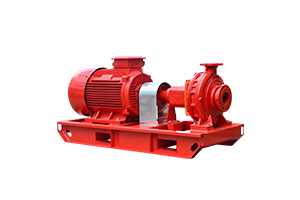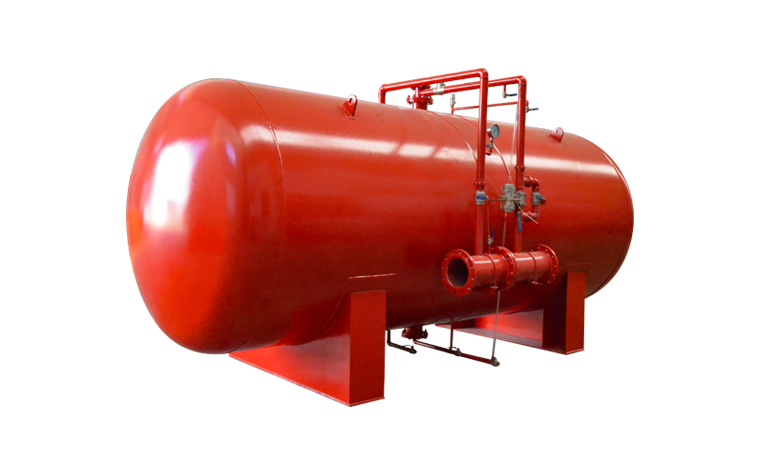-
 Jun 19, 2023Effective Maintenance Practices for Fire PumpsIntroduction:
Jun 19, 2023Effective Maintenance Practices for Fire PumpsIntroduction:
Proper maintenance is crucial for the reliable performance of fire pumps, ensuring their readiness to respond to fire emergencies. Regular maintenance helps identify and address potential issues, enhances the longevity of the pump, and minimizes the risk of malfunctions. This essay explores key practices for maintaining fire pumps, emphasizing the importance of proactive maintenance to ensure optimal functionality.
Adherence to Manufacturer Guidelines:
One of the primary considerations in maintaining a fire pump is adhering to the manufacturer's guidelines. Manufacturers provide specific instructions for maintenance tasks, schedules, and recommended procedures. These guidelines outline essential steps to preserve the pump's performance, safety, and reliability. It is crucial to familiarize yourself with the manufacturer's recommendations and follow them diligently to avoid any potential damage or malfunction.
Regular Inspections:
Regular inspections are vital for identifying any signs of wear, damage, or deterioration. Inspect the fire pump, including electrical connections, control panels, gauges, valves, and piping systems. Look for leaks, corrosion, loose connections, or any other visible abnormalities. Additionally, inspect the suction and discharge lines, impeller, and seals for any signs of blockage or wear. Conduct inspections at recommended intervals and document any findings for future reference.
Lubrication and Cleaning:
Proper lubrication and cleaning are critical for maintaining the mechanical components of a fire pump. Lubricate moving parts as per the manufacturer's recommendations to reduce friction and prevent premature wear. Use approved lubricants and follow proper application techniques. Regularly clean the pump and its components to remove debris, sediment, or mineral deposits that may affect performance. Ensure strainers, impellers, and suction lines are free from obstruction, allowing for unimpeded water flow.
Testing and Exercising:
Regular testing and exercising of fire pumps are essential to verify their operational readiness. Conduct routine tests to evaluate water flow, pressure, and alarm systems. Test the pump at specified intervals or as recommended by the manufacturer. This ensures that the pump can generate the required water flow and pressure to effectively suppress fires. Exercising the pump periodically also helps prevent stagnation and ensures the smooth operation of its mechanical components.
Maintenance Documentation:
Maintaining detailed records and documentation is a crucial aspect of fire pump maintenance. Keep a comprehensive log that includes inspection dates, maintenance activities, test results, and any repairs or replacements performed. This documentation provides a historical record of maintenance actions and serves as a reference for future maintenance tasks. It aids in tracking the pump's performance, identifying recurring issues, and demonstrating compliance with regulatory requirements.
Conclusion:
Regular and proactive maintenance is vital for ensuring the reliable performance of fire pumps. Adhering to manufacturer guidelines, conducting regular inspections, lubricating and cleaning components, testing and exercising the pump, and maintaining detailed documentation are key practices to follow. By implementing these maintenance measures, fire safety professionals can maximize the longevity and effectiveness of fire pumps, ultimately enhancing fire protection measures and contributing to the safety of lives and property during fire emergencies.View details -
 Jun 16, 2023How to distinguish electric and diesel fire pump?There are many differences between electric and diesel fire pumps. Each pump has different applications, service requirements, and lifespans vary based on maintenance. Both electric and diesel fire pumps provide fire sprinklers throughout a facility with adequate water supply during a fire. So, what are the differences between electric and diesel fire pumps? Some of the key differences between electric and diesel fire pumps include their applications, maintenance and cost, and lifespan.View details
Jun 16, 2023How to distinguish electric and diesel fire pump?There are many differences between electric and diesel fire pumps. Each pump has different applications, service requirements, and lifespans vary based on maintenance. Both electric and diesel fire pumps provide fire sprinklers throughout a facility with adequate water supply during a fire. So, what are the differences between electric and diesel fire pumps? Some of the key differences between electric and diesel fire pumps include their applications, maintenance and cost, and lifespan.View details -
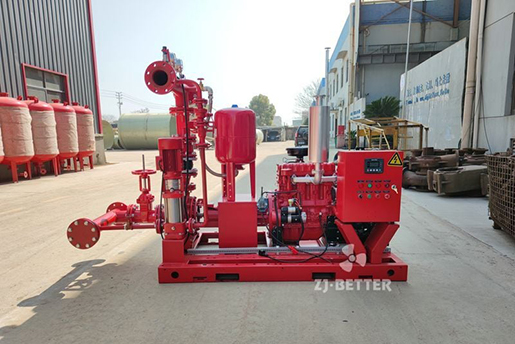 Jun 16, 2023What is a diesel fire pump?Diesel fire pumps provide fire sprinklers throughout a facility with adequate water supply during a fire. A fire pump can be driven by an electric motor, dieselView details
Jun 16, 2023What is a diesel fire pump?Diesel fire pumps provide fire sprinklers throughout a facility with adequate water supply during a fire. A fire pump can be driven by an electric motor, dieselView details -
 Jun 15, 2023Versatile Applications of Fire PumpsIntroduction:
Jun 15, 2023Versatile Applications of Fire PumpsIntroduction:
Fire pumps play a crucial role in fire protection systems, providing the necessary water flow and pressure to combat fires effectively. These versatile devices find applications in various settings where fire safety is paramount. This essay explores the diverse locations and industries where fire pumps are commonly used, highlighting their significance in safeguarding lives and property.
Commercial and Residential Buildings:
Fire pumps are integral to fire suppression systems in commercial and residential buildings. They ensure a reliable water supply to sprinkler systems, standpipes, and fire hydrants. These pumps help control and extinguish fires, minimizing the risk of damage and facilitating safe evacuation. Fire pumps are commonly found in high-rise buildings, shopping centers, hospitals, hotels, and residential complexes, providing essential protection against fire hazards.
Industrial Facilities:
Industrial settings pose unique fire risks due to the presence of flammable materials, machinery, and complex infrastructure. Fire pumps are crucial in these environments, providing the required water flow and pressure to suppress fires. Industries such as manufacturing plants, refineries, chemical plants, and power generation facilities rely on fire pumps to quickly and effectively extinguish fires, preventing catastrophic incidents and minimizing production disruptions.
Warehouses and Storage Facilities:
Warehouses and storage facilities are prone to fire hazards due to the accumulation of flammable materials, including chemicals, fuels, and combustible goods. Fire pumps are used to mitigate these risks by supplying water to fire sprinkler systems and firefighting equipment. The high-capacity pumps ensure prompt fire suppression, protecting valuable inventory and minimizing the potential for widespread damage.
Mining and Construction Sites:
Mining and construction sites often operate in remote locations with limited access to fire hydrants or municipal water supplies. Fire pumps are employed to provide on-site fire protection in these challenging environments. They ensure a reliable water source for firefighting equipment and suppress fires that may result from equipment malfunctions, fuel leaks, or other hazards. Fire pumps at mining and construction sites help safeguard workers, equipment, and surrounding structures.
Marine and Offshore Applications:
Fire safety is of utmost importance in marine and offshore settings, where fire emergencies can have severe consequences. Fire pumps are used on ships, oil rigs, and other marine vessels to supply water for firefighting purposes. These pumps are designed to withstand harsh maritime conditions, ensuring continuous operation even in rough seas. They provide the necessary water pressure to combat fires at sea, protecting crew members, passengers, and valuable marine assets.
Conclusion:
Fire pumps find widespread use in a range of locations and industries, ensuring the effective suppression of fires and protecting lives and property. From commercial buildings and industrial facilities to warehouses, mining sites, and marine environments, fire pumps play a critical role in fire safety systems. Understanding the diverse applications of fire pumps underscores their importance in mitigating fire risks and underscores the need for reliable, high-performance pumps tailored to specific environments. By employing fire pumps in these settings, we enhance fire protection measures, providing valuable peace of mind and significantly reducing the potential impact of fire emergencies.View details -
.jpg) Jun 15, 2023Considerations When Purchasing a Fire PumpIntroduction:
Jun 15, 2023Considerations When Purchasing a Fire PumpIntroduction:
Purchasing a fire pump is a significant investment for fire safety and protection systems. It is crucial to carefully consider various factors to ensure the selected pump meets the specific requirements of the application. This essay highlights key considerations when purchasing a fire pump, emphasizing their importance in achieving optimal performance and effectiveness.
System Requirements:
Understanding the system requirements is essential before purchasing a fire pump. Consider factors such as the size and layout of the facility, the hazard classification, and the desired fire suppression system's design. Determine the required water flow rate and pressure to effectively combat fires in the designated area. By assessing the system requirements, you can select a fire pump that is appropriately sized and capable of meeting the hydraulic demands of the fire protection system.
Compliance with Standards and Regulations:
Fire pumps must adhere to relevant industry standards and local fire safety regulations. Ensure the selected pump complies with recognized standards, such as the National Fire Protection Association (NFPA) codes and guidelines specific to your region. Compliance ensures that the fire pump meets rigorous safety and performance standards, enhancing its reliability and effectiveness in fire suppression operations.
Reliability and Durability:
Reliability and durability are critical factors when purchasing a fire pump. The pump should be built with high-quality materials and robust construction to withstand demanding operational conditions. Look for pumps from reputable manufacturers known for producing reliable and durable equipment. Consider factors such as maintenance requirements, ease of access for repairs, and the availability of spare parts. A reliable and durable fire pump ensures long-term operational readiness and minimizes downtime.
Power Source and Fuel Type:
Consider the available power sources and the appropriate fuel type for the fire pump. Electrically powered pumps are commonly used in buildings with a reliable power supply, while diesel-driven pumps are preferred for areas with unreliable or limited electrical power. Assess the availability of fuel and determine which option is most suitable for your specific application. Carefully consider the fuel efficiency and availability of backup power options to ensure continuous operation during emergencies.
Manufacturer Support and Warranty:
Choosing a fire pump from a reputable manufacturer is crucial. Consider the manufacturer's reputation for producing high-quality fire pumps and their commitment to customer support. Look for manufacturers that offer comprehensive warranties, technical support, and readily available spare parts. A reliable manufacturer will provide guidance during the selection process, offer installation assistance, and provide ongoing support throughout the pump's lifespan.
Conclusion:
Purchasing a fire pump requires careful consideration of several factors to ensure optimal performance and reliability. By assessing the system requirements, complying with standards and regulations, prioritizing reliability and durability, considering the power source and fuel type, and choosing a reputable manufacturer, fire safety professionals can make informed decisions when purchasing a fire pump. A well-selected fire pump enhances the overall effectiveness of fire suppression systems, safeguarding lives and protecting property in the event of a fire emergency.View details -
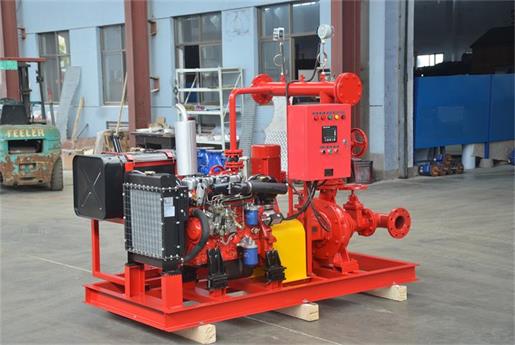 Jun 14, 2023How to save fuel for diesel engine fire pump?Generally speaking, fire pump and diesel engine fire pump have a large water flow and a large total flow, and the operation of machinery and equipment will consView details
Jun 14, 2023How to save fuel for diesel engine fire pump?Generally speaking, fire pump and diesel engine fire pump have a large water flow and a large total flow, and the operation of machinery and equipment will consView details

.png)
.png)
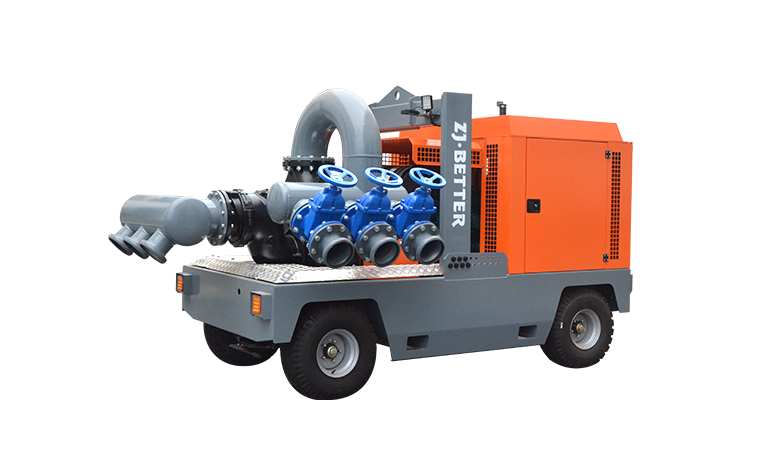
.png)
